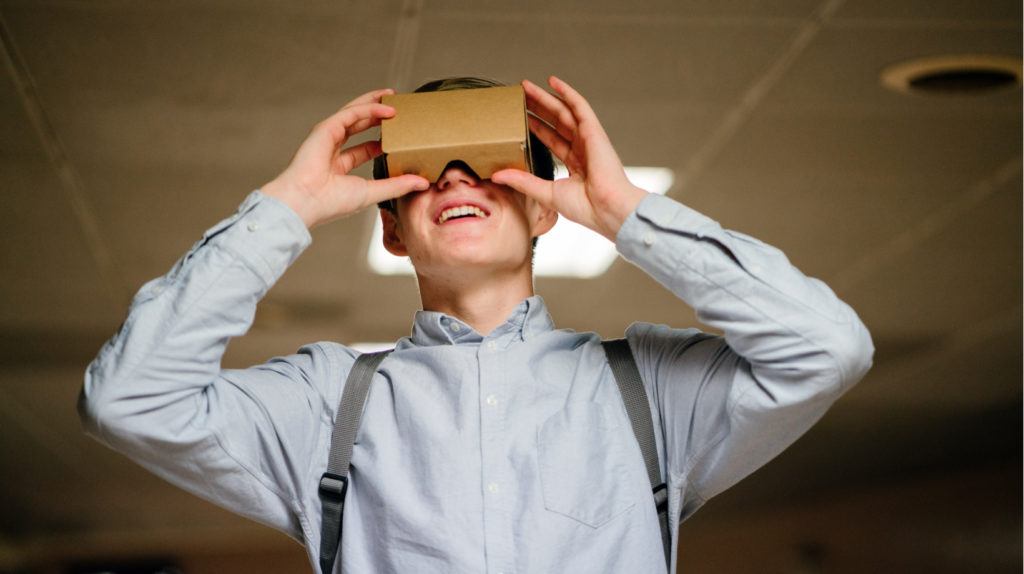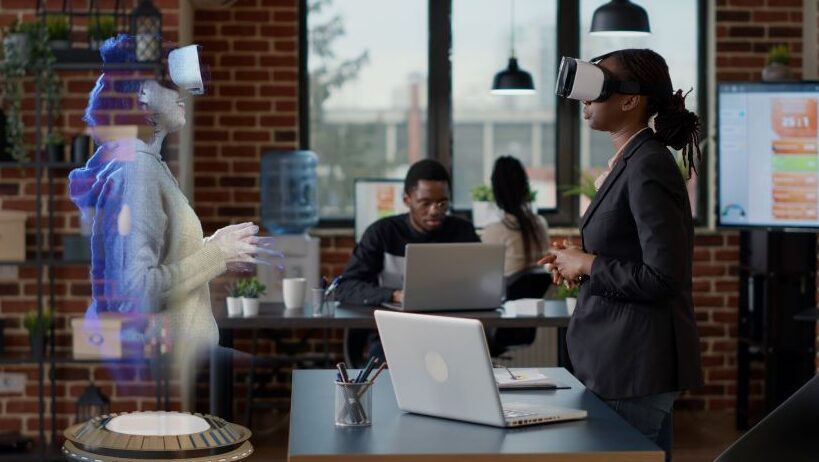How To Implement Virtual Reality In The Learning Process
While VR adoption has been a bit slow across the board, educators are certainly finding some nifty ways to use this technology within the classroom. Used correctly, this technology can be employed by teachers to create some innovative learning opportunities for students. Anyone thinking of using VR in the classroom should consider one of these 5 creative applications.
1. Immersive Language Learning
Language learners have long touted immersion as an ideal way to help students master languages. Rather than simply learning through typical classroom experiences and instruments like lectures and worksheets, teachers often prefer to use experiential learning so that students ‘live’ the language rather than simply studying it. One example of this is opting to only speak the language being learned in the classroom. Other teachers use cultural experiences. In some cases, language learning classes even culminate with exchange trips to other countries.
As with any other educational experiences, the ability for teachers to engage in immersive language teaching is limited by resources and geography. Fortunately, there are several language learning apps developed to combine language with VR to create these experiences.
One example of this is Mondly VR [1]. Using this app, students are able to practice conversational language skills from within a series of realistic simulations. Students can also use VR to interact with students from other countries and go on virtual sightseeing tours.
2. Creating Better Learning Opportunities For Underserved Populations
Some educators have the fortune to be able to create unique and enriching learning experiences by taking students on field trips. For others, that’s a bit more difficult. They may be serving students who are:
- Disabled to the extent that field trips are not optional
- Homebound, institutionalized, or hospitalized
- Living in remote areas
In addition to this, many educators simply work in school districts that don’t have the resources that allow them to reserve school buses, cover admissions fees, or any other costs relating to traditional field trips.
This is unfortunate because in many instances the students who could most benefit from enriching experiences don’t have access to them. Fortunately, teachers can use VR to give these student populations access to places they wouldn’t ever have otherwise. Here are some examples of VR ‘field trips’ students can take:
- Visiting and exploring national parks
- Touring museums
- Exploring historical locations and monuments
- Discovering remote regions such as Antartica or Sub Saharan Africa
3. Giving Students The Opportunity To Create With VR
Students don’t need to simply consume VR content. They can also spend time using VR technology to create. For example, Google’s Tilt Brush tool allows users to create three-dimensional art in VR. The tool provides students with a variety of brush types and palettes. Students can then wear VR headsets and create beautiful art including characters, landscapes, skylines, and more.
That’s not all. Coding in the classroom isn’t new, but VR coding [2] is. Just like students have learned coding skills to build games, apps, even robotics programming, now they can be taught to apply those skills to VR. Students can create VR apps and then test them out in the classroom.
4. Modeling And Simulations
Imagine a drivers ed student driving a route over and over again without spending any money on gas. Now, picture an architectural engineering student testing different building materials to create a walkway that spans a city block. What about a squeamish student dissecting without complaint?
With Virtual Reality, students can use modeling to understand and test a variety of concepts and theories in engineering, math, and science. VR simulations can provide students with important experiences as well as providing needed information for ongoing assessments. In addition to this, once the original cost of hardware and software is covered, other expenses are minimal.
5. Developing Empathy Within Students
A great number of students have never experienced war where they live. They haven’t lived in abject poverty or with little to no resources. Many have never experienced a devastating natural event. Putting major tragedies aside, many students simply have not had experience of exposure to different cultures, traditions, or belief systems.
Current events curriculum, pen pal programs, and other efforts can help. Still, their impact is limited. Fortunately, VR can be used to put students in places they have never been and in contact with people they may not otherwise meet. Imagine students ‘sitting’ in a classroom in Kenya, navigating the daily search for clean water in Flint Michigan, or being taken on tour in a country where there is currently political unrest. These experiences can increase understanding, and develop a sense of empathy.
Unlimited Possibilities
These are just a few ways that VR can be used in the learning process. The possibilities seem endless. Different combinations of classrooms and educational goals can lead teachers to conceive their own uses for this technology. In any case, students are guaranteed to come out ahead as long as educators are committed to using VR to its full potential.
Sources:
[1] Virtual Reality is the Next Step in Language Learning
[2] Building VR/AR Applications in School









